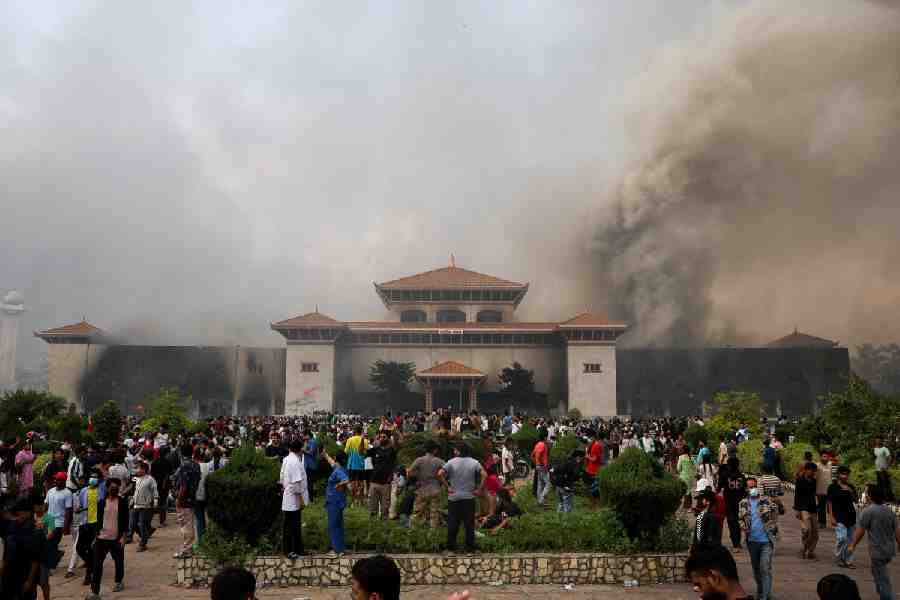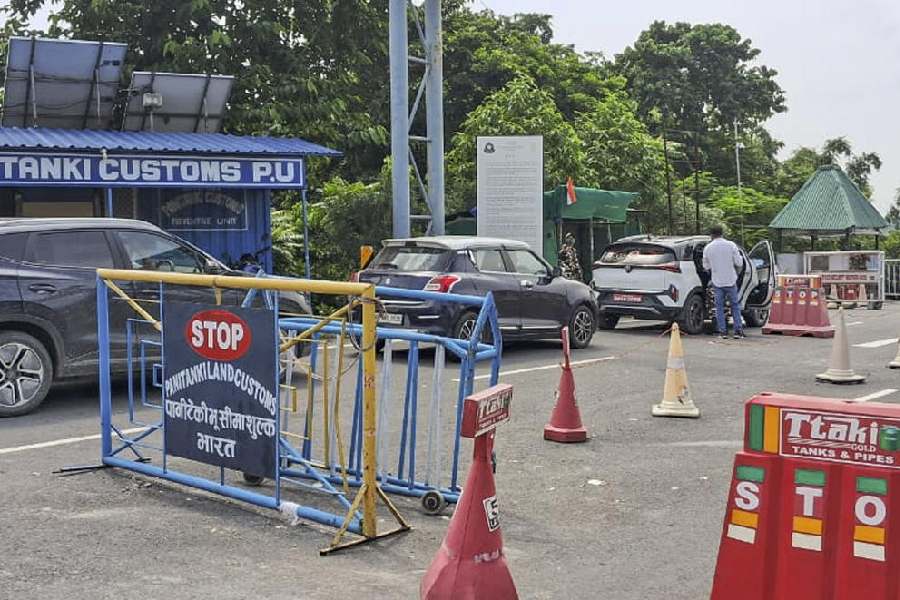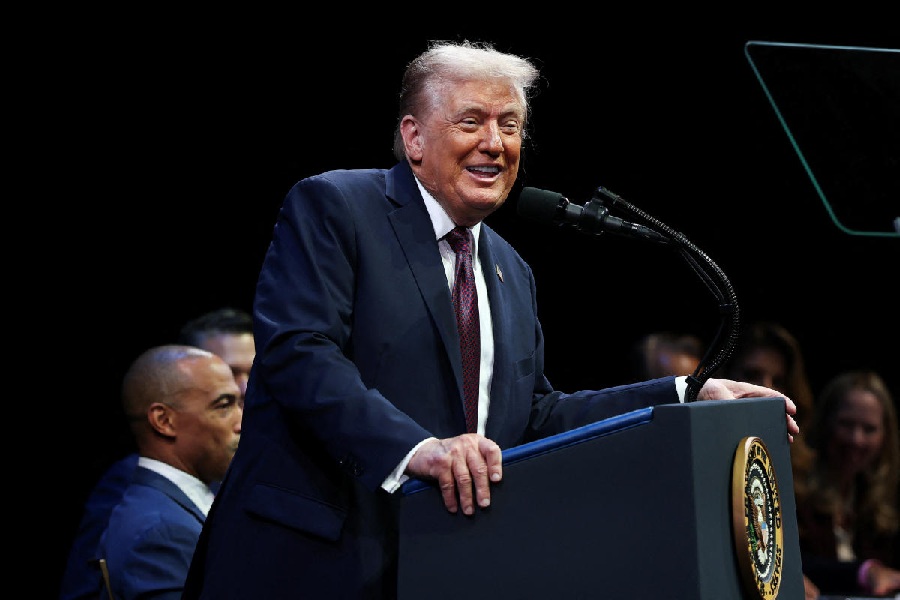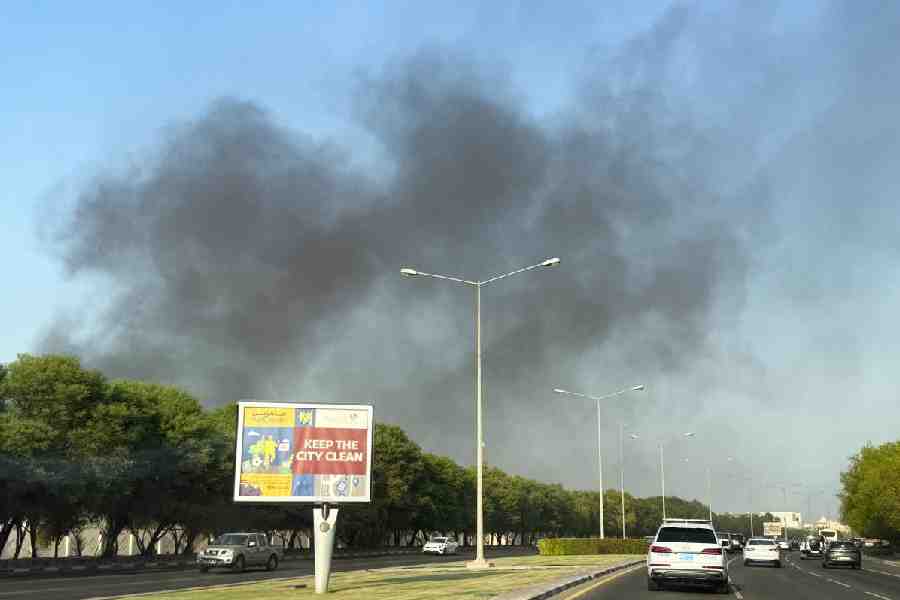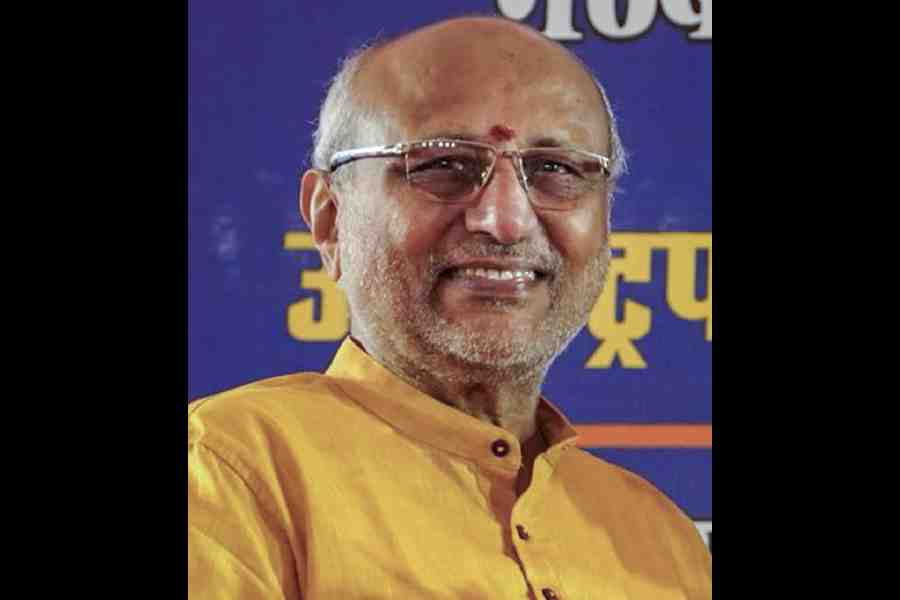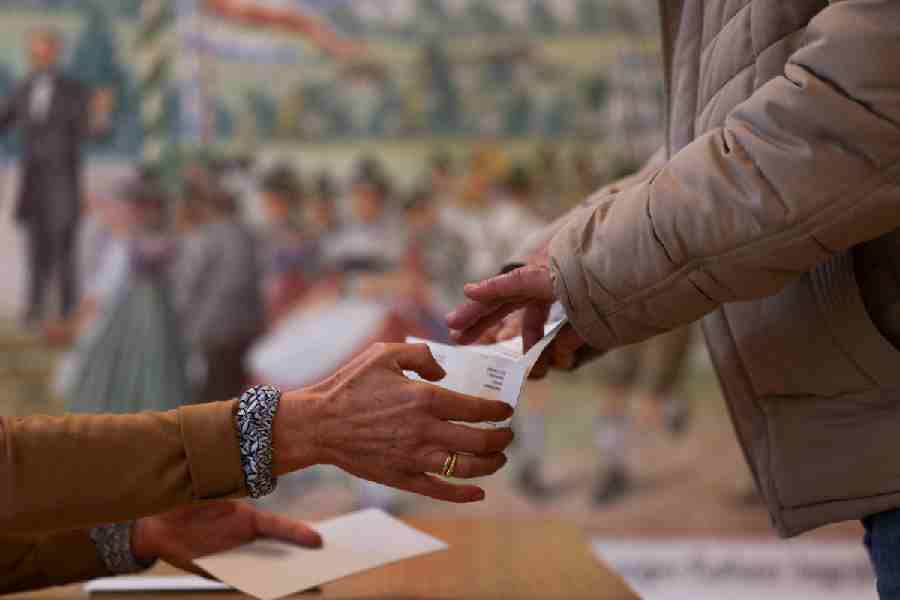 |
Is there, in the time of global links, a common creative chromosome embedded in the genetic profile of Bengalis? The question is, of course, rhetorical, with an undertow of sentimentalism in its wake. For contemporary art is now adrift in an ocean of universal concerns. But Artists Circle, Calcutta, and Bandhan Art and Cultural Society, Dhaka, sought to locate the elusive DNA of Bengal’s creativity in a recent show at the Academy of Fine Arts. Presenting 12 artists from Bangladesh ?the show’s real anchor and attraction ? along with names from Shantiniketan and Calcutta, it was titled, what else, but Bengal Chromosome.
Sceptics would scoff, but to gaze at one of Nasreen Begum’s paintings was to breathe the balmy air of grambangla. With neither titles nor numbers attached to the frames, you could not be more specific, but this particular work, a kind of faded mirage of village life, had a persuasive Bengaliness that was yet shorn of limp sentimentalism. Which came as much from the theme as from the thin, broad sweeps of paint that recalled the tradition of wash. A range of browns imported a fey evanescence, underlined by a visual riff that recurred in her other works: Falling Leaves, which brought to mind Tagore’s Jharapata Go. The Bengali identity was, however, proclaimed more literally in the works of Quamrul Hassan whose fluent lines and brevity of form went back to the dialect of pat. Aminul Islam’s mixed media works approximated aerial prints with a tangle of black lines scarring the centre of a palely tinted ground. The droll spirit of child art infected Shamarjit Roy Chowdhury like it does many artists here, while the elegance of the Bengali script counterpointed the wry simplification of form in Abdus Shakoor.
Sayed Enayat’s semiabstract acrylics were more urbane and universal. As were the energetic chaos in Mahmudul Haque’s oils and the riot of colours in Anwarul Haq’s mixed media canvases, echoing the stylistic explorations seen here frequently. Swapan Chowdhury’s smartly textured works were also seen along with the paintings of Maksudul Ahsan and Ranjit Das.
The West Bengal section comprised an indiscriminate procession of names, each represented by one or two works. Paritosh Sen, Prakash Karmakar, Dhiraj Chowdhury, Jogen Chowdhury, Lalu Shaw, Anita Roy Chowdhury and even two Jottings by Ganesh Pyne figured among the works by the seniors.


